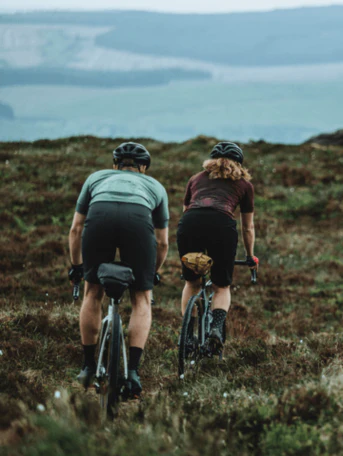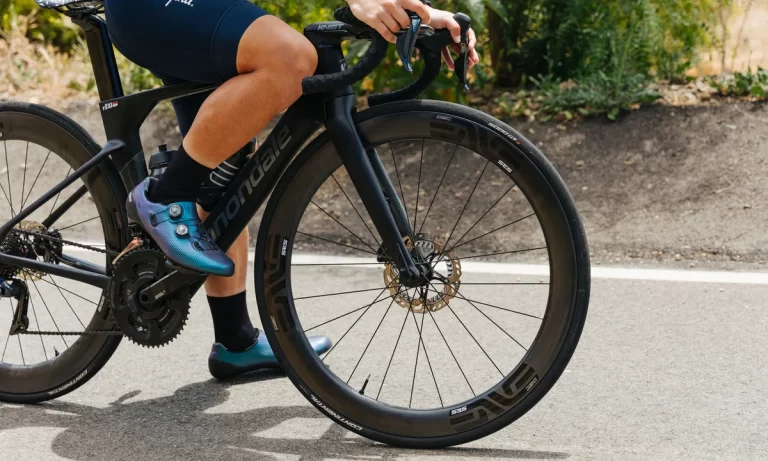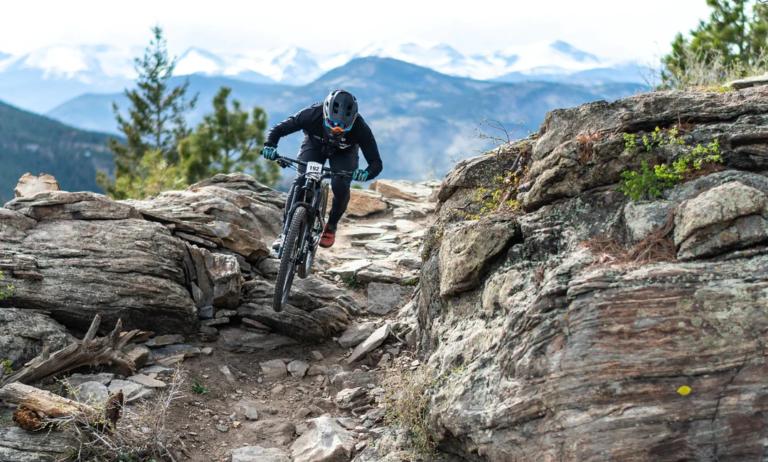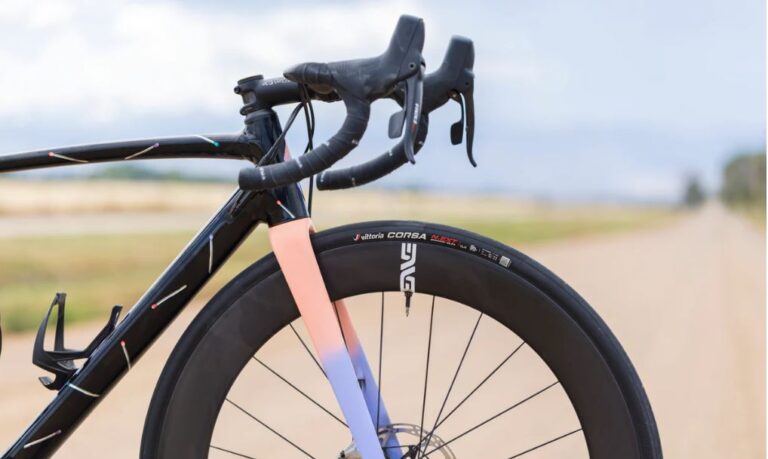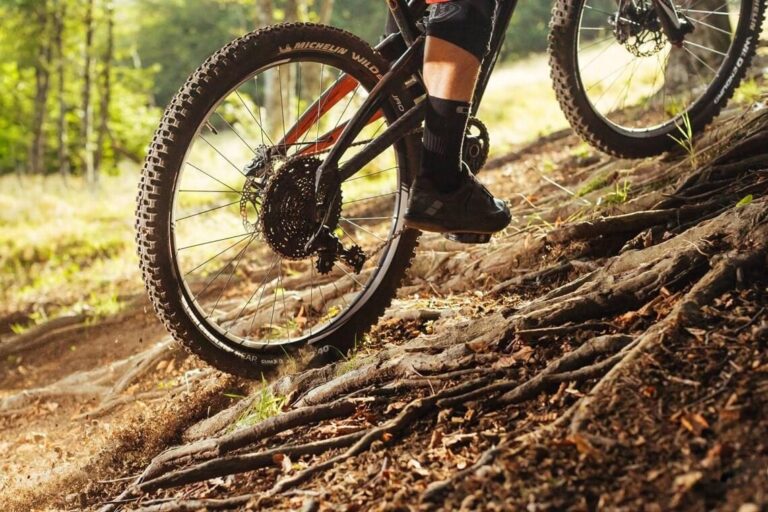Glide Through the Air: Enhancing Efficiency with Aerodynamics and Downhill Bike Tires
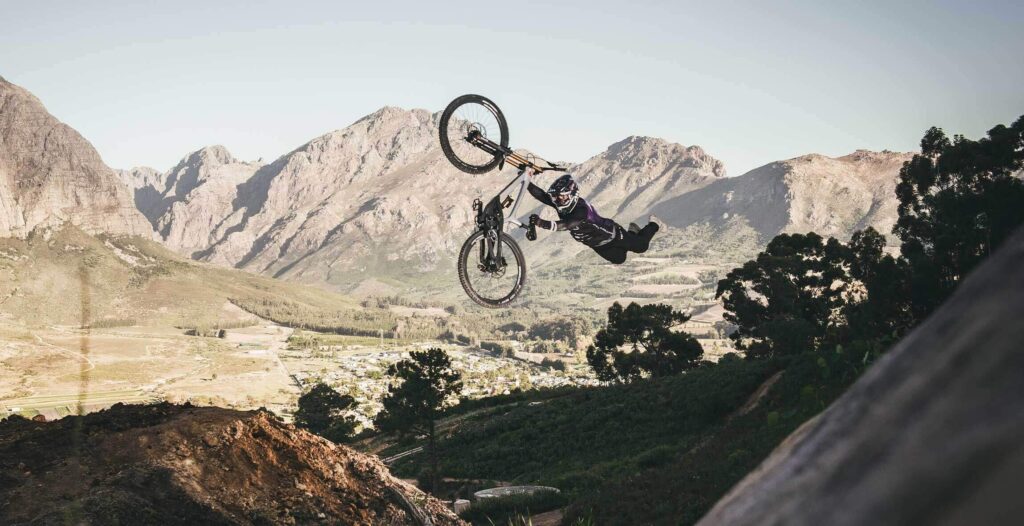
Key Point Summary of Aerodynamics and Downhill Bike Tires:
- Aerodynamics in Play: Even in downhill mountain biking, where gravity is your main propellant, aerodynamics plays a role in maximizing speed and efficiency.
- Tire Design and Shape: The shape and tread pattern of downhill bike tires can influence air resistance, albeit less significantly than in road cycling.
- The Importance of Width and Profile: Wider tires with aggressive treads are standard in downhill biking for grip and control, but they also present unique aerodynamic challenges.
- Speed vs. Control: The balance between aerodynamic efficiency and the need for traction and control on diverse terrains.
Downhill mountain biking thrills with its breakneck speeds and technical challenges. As a seasoned cyclist who’s navigated the twists and turns of numerous biking disciplines, I’ve come to appreciate the nuanced role aerodynamics plays in every aspect of cycling, including the adrenaline-packed descent of downhill racing. While it’s easy to assume that aerodynamics is solely the concern of road racers in their quest for flat-out speed, there’s an intriguing aerodynamic puzzle at play in the design and selection of downhill bike tires as well.
The Aerodynamic Puzzle of Downhill Tires
At first glance, the concept of aerodynamics in the realm of knobby, wide, and aggressively patterned downhill tires might seem counterintuitive. After all, these tires are engineered for grip and durability over rough terrain, not for slicing through the air. However, as we barrel down mountainsides, every component of our bike interacts with the air around us, creating drag that can sap speed and energy.
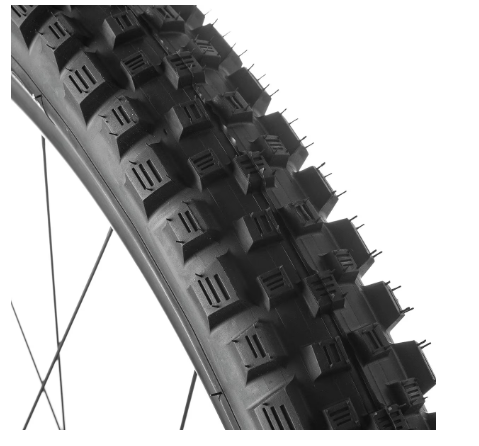
Downhill bike tires are wide and bulky to maximize contact with the ground, providing the traction needed for control at high speeds and over loose or rocky surfaces. This width, while essential for grip, increases the frontal area exposed to airflow, potentially increasing drag. Yet, the primary focus in downhill tire design has always been on maximizing grip and control, with aerodynamic considerations taking a back seat. The aggressive tread patterns that are the hallmark of these tires may disrupt airflow, but they’re crucial for navigating the challenging terrains of downhill courses.
Treading the Line Between Speed and Control
In my racing days, choosing tires was always a balancing act between seeking maximum control and not wanting to feel like I was dragging a parachute behind me. The tread pattern, while primarily selected for its ability to bite into the dirt, also has an aerodynamic aspect. Deep, widely spaced knobs are fantastic for muddy conditions, offering grip where there’s little to be found, but they also create more aerodynamic drag. Conversely, tires with slightly lower and more closely spaced knobs might offer a bit less grip in extreme conditions but can sometimes feel faster on hardpack trails due to reduced air resistance.
The Role of Tire Pressure and Profile
Tire pressure and the resulting tire profile can also impact aerodynamic performance. Too low a pressure and the tire deforms excessively, increasing the contact patch and, potentially, the drag. Too high, and you lose valuable traction and comfort. Finding that sweet spot where the tire’s shape optimally balances grip and aerodynamic efficiency is part art, part science.
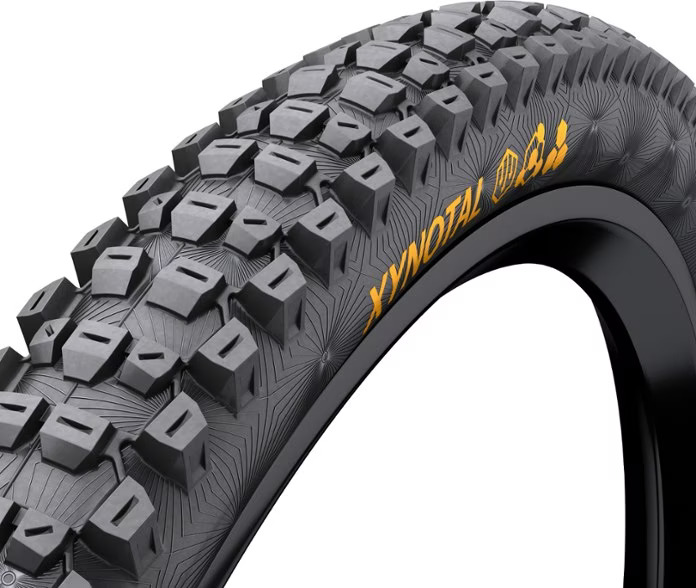
Aerodynamics and Downhill Bike Tires: Material and Construction
The materials and construction of a tire influence its overall performance, including aerodynamics. Lighter materials and advanced constructions can reduce the rotating mass, making it easier to accelerate and maintain speed. While this isn’t directly related to aerodynamics, it’s a crucial factor in the overall performance equation of downhill biking, where acceleration out of turns and maintaining momentum are key.
Conclusion: The Aerodynamic Consideration
While aerodynamics may not be the first thing that comes to mind when thinking about downhill mountain biking, it’s clear that even at gravity’s mercy, the way our equipment interacts with the air around us can influence our performance. The design and selection of downhill bike tires involve a delicate balancing act between the need for unparalleled grip and the desire to minimize drag. As technology advances and our understanding of these dynamics deepens, we continue to see innovations that push the boundaries of what’s possible, both in terms of speed and control.
In the end, the choice of tire—like much of cycling—is deeply personal, influenced by riding style, conditions, and, yes, even how we interpret the role of aerodynamics in the quest for downhill supremacy.

Top Manufacturers
- Continental Mountain Bike Tire: Known for its extreme protection against tearing and punctures, this tire is lightweight and ideal for beginners. It’s praised for its maneuverability but noted for a compromise on speed.
- SCHWALBE Downhill Bike Tire (Premium Pick): This tire is recommended for its soft texture, multipurpose design, and extreme stability, making it best for professional riders. It offers unparalleled lateral stability and grip on the surface, along with reinforced material for durability and snakebite protection.
- Vittoria Mountain Bike Tire (Top Pick): Distinguished by its use of polymer for added durability, noise insulation, and grip, this tire incorporates Air-Liner technology for improved grip and stability. It’s designed for professional bikers, offering excellent control and a long lifespan.
These tires cater to different needs, from beginner to professional riders, and offer features such as durability, grip, and comfort for downhill mountain biking.
FAQ

Do tires affect aerodynamics?
Yes, tires do affect aerodynamics. Their width, tread pattern, and shape can influence air resistance, impacting a bike’s overall aerodynamic efficiency.
Which gear is best for downhill bike?
For downhill biking, a lower gear is often best to maintain control and stability at high speeds. However, the optimal gear can vary based on the rider’s strength, the slope’s steepness, and the terrain’s technicality.
What is the most aerodynamic position on a mountain bike?
The most aerodynamic position on a mountain bike involves lowering the body close to the bike, tucking the elbows in, and keeping the head down to reduce wind resistance. This position is most effective during high-speed descents.
Does pavement wear down MTB tires?
Yes, pavement can wear down MTB tires faster than dirt or natural trails. The abrasive surface of pavement increases friction and can quickly erode the softer, grippier rubber compound used in many mountain bike tires.
Happy Cycling!
John

